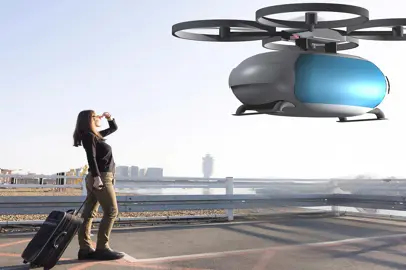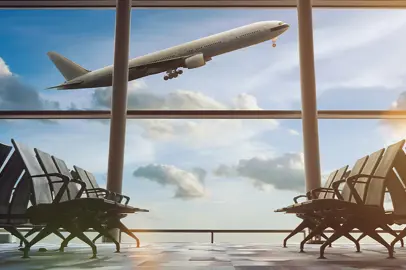Regional Air Mobility: first flight between Fano and Rome Urbe
The Fano-Rome Urbe connection marked the first demonstration flight of the Italian Regional Air Mobility (RAM): a short-haul mobility model capable of integrating territories with other transport systems, creating a flexible, intelligent and widespread network on a national scale, with pet-friendly carriers.
A 9-seater King Air B200 connected the Adriatic side to the Tyrrhenian side in less than 50 minutes, compared to the almost four hours needed with traditional land/rail vehicles. The air/air integration thus goes beyond the classic air/rail scheme, opening up new perspectives for the transversal connections of the Peninsula.
This first operational test starts the development of scheduled commercial connections between different "city pairs" of airports of territorial interest. Airports such as Fano (LIDF) and Roma Urbe (LIRU), already equipped with the necessary infrastructure, become strategic nodes of air mobility that creates new opportunities for territories and passengers, including those traveling with pets.
According to recent studies, 80% of tourists visit only 10% of the world: a contradiction for Italy, the country with the largest number of UNESCO sites, many of which remain outside the mass tourist circuits or in poorly connected areas.
With the Program Contract signed in July, ENAC has entrusted its in-house company Enac Servizi with the development of RAM: a new frontier of air transport, no longer reserved for a few or only flight schools, but accessible to a wider audience thanks to low operating costs, made possible by the technological innovation of new generation aircraft and an innovative management model that also provides for the possibility of Transportation of PET on board.
The RAM Terminals
ENAC, through Enac Servizi, manages 21 strategic airports and a heliport in Capri, creating a network intended to act as a reserve of operational capacity to support the major airports and to generate new business opportunities and economic and tourist development of the connected territories.
In the new paradigm, the territorial airport is no longer a "non-place", but becomes a central element of the journey, an experiential access point to the territories. Thanks to this vision, short-haul air mobility will be able to reach destinations outside the traditional circuits, with particular attention also to the transport of pets as an integral part of the journey.
The RAM Terminal that Enac Servizi will build on the managed airports will offer a new way of enjoying travel, transforming the territorial airport from a niche structure to a tourist relocation hub.
Rome Urbe Airport
A first concrete example is the Rome Urbe airport (LIRU), a central node of the network for short-haul air connections, which will also see the start of night operations thanks to the new illuminated runway and innovative helicopter-to-plane routes.
Helicopter connection between Fiumicino and Rome Urbe
A helicopter connection will be activated between Rome Fiumicino (FCO) and Rome Urbe (LIRU), allowing passengers arriving at the international airport to quickly reach the city center of Rome or to continue to the other territories of the network on board small aircraft.
In collaboration with Roma Capitale, ENAC and Enac Servizi will also build a new 10.5 km illuminated cycle path along the Tiber, with an allocation of over 3 million euros, to integrate the Urbe airport into the capital's soft mobility network, from Castel Giubileo to Ponte Salario, crossing the embankment naturalistic area.
RAM airports in Italy
To support this development, ENAC has allocated to Enac Servizi a multi-year program of investments and redevelopment interventions on other strategic airports, including:
- Rome Urbe Airport (LIRU) approximately 18 million euros,
- Capua (LIAU) €8 million,
- Milan Bresso (LIMB) €9m,
- Pavullo nel Frignano (LIDP) €6 million,
- Rieti (LIQN) €10 million,
- Siena (LIQS) €34m,
- Viterbo (LIRV) €2m.
In the medium term, further interventions are planned on all the other airports in the network entrusted to Enac Servizi.
ENAC President Pierluigi Di Palma underlined that "ENAC has set up a substantial investment program to make the airports attractive and resilient. They are spaces to be lived integrated into the social, economic and cultural fabric of the territories in which they are inserted, at the service of communities, development and tourist delocalization. It is a change that can make areas that have remained marginalized by massive tourist development attractive again and that focuses on quality of life and environmental diversity. Thanks to this new paradigm it will be possible to imagine air/air intermodality scenarios to reach destinations sometimes far from the classic mass circuits and in a different way".
As highlighted by ENAC General Manager Alexander D'Orsogna , regional air mobility represents the new frontier of air transport to and from territorial airports, where there will no longer be only business aviation and flight schools, but also services accessible to a wider audience thanks to low operating costs, made possible by the technological innovation of new generation aircraft and a business model introduced by ENAC.






